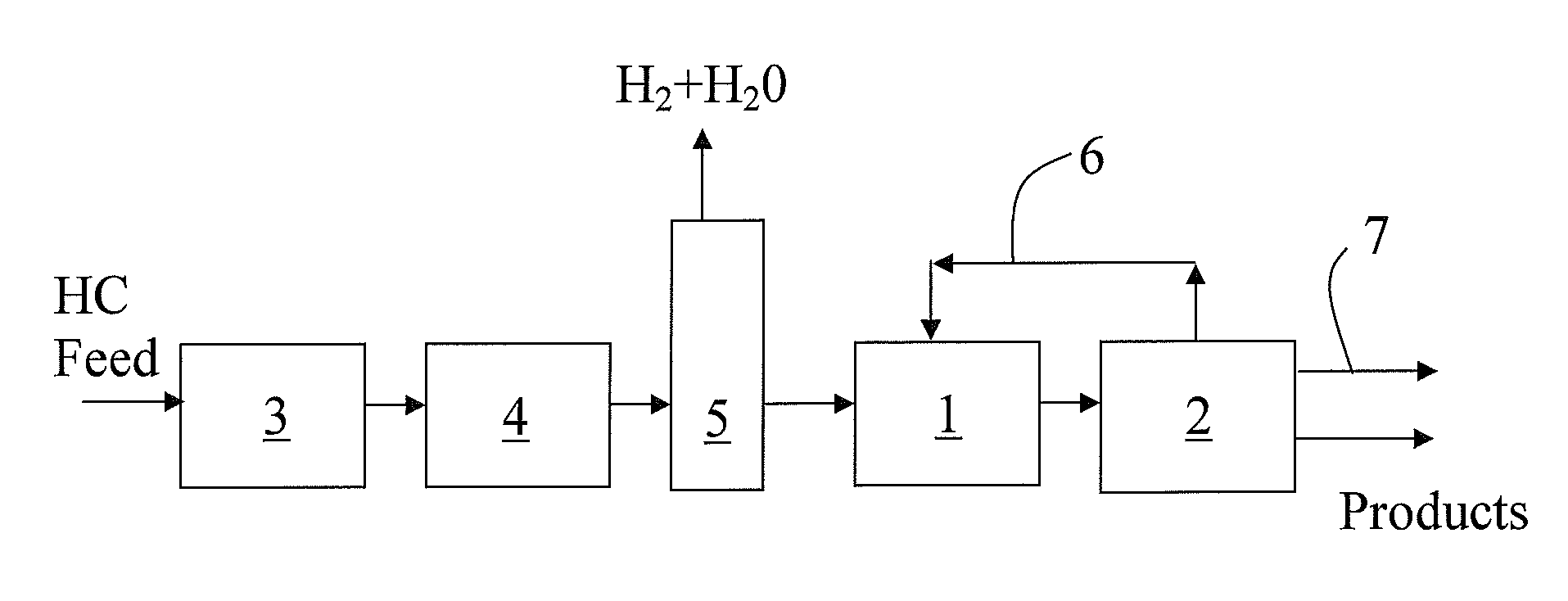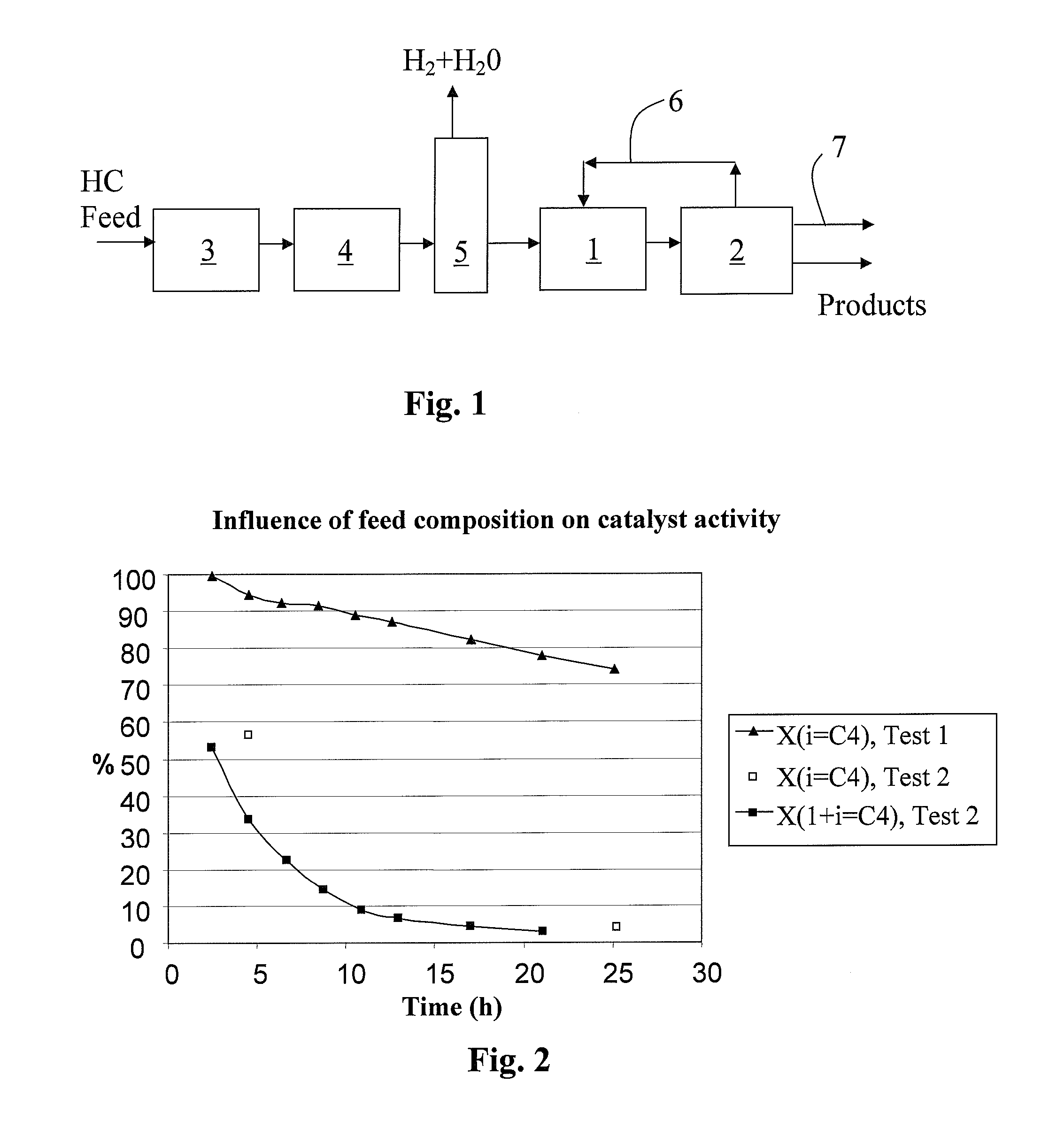Process for dimerizing olefins
- Summary
- Abstract
- Description
- Claims
- Application Information
AI Technical Summary
Benefits of technology
Problems solved by technology
Method used
Image
Examples
example 1
Synthesis of Mesoporous Molecular Sieve Embedded in MIFI Structure, NaMMS-96h-4Z5-2A1-35, Using an Aluminium Source
example 1a
Synthesis of Na-MMS-96h-4ZS-2A1-35
[0121] The synthesis of Na-MM5-96h-4ZS-2A1-35 was carried out by preparing solutions A, B and C. Solution A was prepared by mixing 4.5 g of fumed silica with 51.7 g of distilled water with continuous stirring (196 rpm) for 20 minutes. Solution B was prepared by adding 18.1 g of tetramethylammonium silicate to 11.7 g sodium silicate with continuous stirring (180 rpm) and the obtained mixture was stirred for 20 minutes. Solution C was prepared by dissolving 26.3 g of tetradecyl trimethyl ammonium bromide in 174.3 g of distilled water with vigorous stirring (336 rpm) for 20 minutes. Solution B was added to Solution A slowly (in 15 mm) with vigorous stirring (320 rpm) and after the addition of Solution B the obtained mixture was stirred for further 20 mm. Solution C was added to the mixture (A+B) slowly (20 mm) with vigorous stirring (336 rpm) and after the addition of solution C the mixture was further stirred for 20 minutes. Then 4.2 g of MFI nuclei...
example 1b
Preparation of H-MM5-96 h-4ZS-2A1-35
[0122] A composition comprising 10 g of Na-MMS-96h-4ZS-2A1-35 (manufactured above) was ion-exchanged with 1 M ammonium nitrate aqueous solution for 24 h at room temperature. After the ionexchange the mesoporous material was washed thoroughly, dried and calcined using step calcination procedure in a muffle oven at 450° C.
[0123] The following examples illustrate the influence of butadiene and water on the activity of a mesoporous catalyst (H-MM5-96h-4ZS-2A1-35) according to Finnish Patent Application No. 20041675. The examples include dimerization tests carried out with isobutylene in a microreactor at a pressure of 20 bar. The catalyst was packed into the reactor in the form of a powder and mixed with silicon carbide (SiC). The concentration of isobutylene in the dried (anhydrous) feed was about 20 wt % in Examples 1, 3 and 4. In Examples 2, 5, 6, 7 and 9, the concentration of isobutylene in the industrial feed was about 17 wt-% while the concen...
PUM
| Property | Measurement | Unit |
|---|---|---|
| Temperature | aaaaa | aaaaa |
| Temperature | aaaaa | aaaaa |
| Temperature | aaaaa | aaaaa |
Abstract
Description
Claims
Application Information
 Login to View More
Login to View More - R&D
- Intellectual Property
- Life Sciences
- Materials
- Tech Scout
- Unparalleled Data Quality
- Higher Quality Content
- 60% Fewer Hallucinations
Browse by: Latest US Patents, China's latest patents, Technical Efficacy Thesaurus, Application Domain, Technology Topic, Popular Technical Reports.
© 2025 PatSnap. All rights reserved.Legal|Privacy policy|Modern Slavery Act Transparency Statement|Sitemap|About US| Contact US: help@patsnap.com



